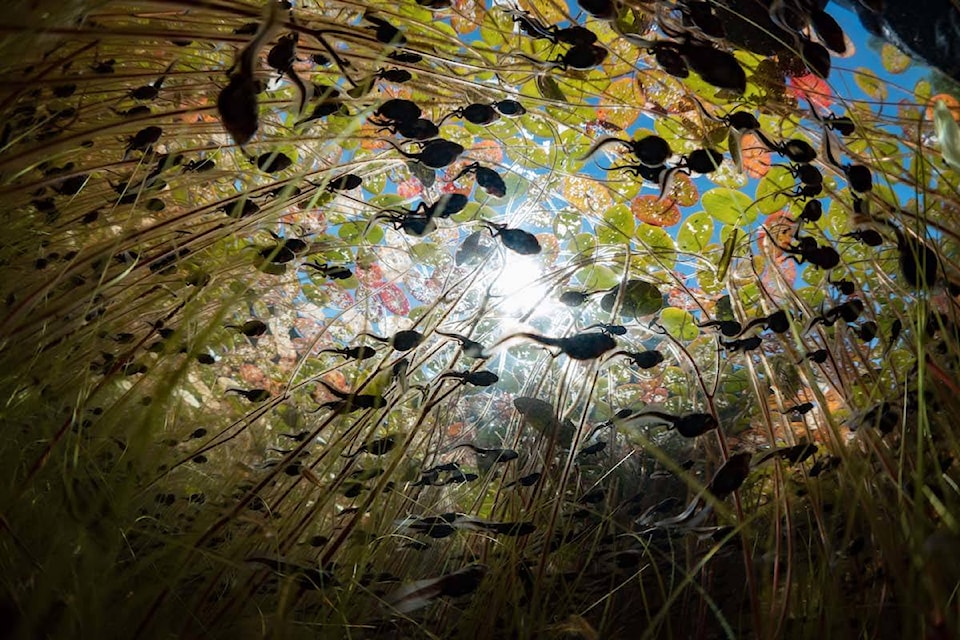“People don’t think of tadpoles as photogenic but when you take the time to look at their features, they’re actually very cute,” says photographer Maxwel Hohn.
Hohn knows about which he speaks. A rare group of little toads-in-the-making are the stars of his latest nature documentary ‘Tadpoles: The Big Little Migration.’
The Vancouver Island based photographer/filmmaker spent four years filming a rarely seen daily migration of western toad tadpoles in a remote Vancouver Island lake.
The nine-minute mini documentary which premiered yesterday (and is available for free streaming on social media channels, vimeo and youtube) provides a glimpse into the lives of an estimated three million tadpoles that inhabited the lake.
Hohn told the Mirror that as a nature videographer, he always strives to find something unique and share information about it with his viewers.
“Documenting almost the entire life cycle of an animal is rare, challenging, and lots of fun.”
Through visually enticing shots, the film captures stages of the tadpoles’ life cyle in water. They migrate daily from the deep end of the lake to the shallow parts. Once they arrive in the shallows they bathe in the oxygen-rich waters and feast on the micro plants and algae.
A few hours later, they turn around and do the same route in reverse, swimming the same gauntlet lined with predators, this time so they can spend the night in the deeper parts of the lake. They repeat this migration every day throughout their six to eight weeks of metamorphosis.
There are also dramatic sequences in the film, where the perils of the journey are highlighted through predators such as water bugs and leeches who eat the tadpoles. The last leg of the journey shows the transition of the aquatic tadpoles to terrestrial toads.
“To see these aquatic tadpoles evolve into terrestrial animals before my own eyes left me feeling like a proud parent, and is proof that even the smallest of animals can have the biggest of impacts,” said Hohn.
| Maxwel Hohn photographed by Steve Woods during the filming of the documentary |
Growing up in British Columbia, tadpoles were a huge part of Hohn’s childhood. So getting back into the water as a photographer to capture their journey was a “lifetime in the making” for him.
By showing an active migration of western toad tadpoles, Hohn also wanted to establish a connection with viewers who, like him, may have interacted with the species growing up.
“Connection to the species makes people more aware,” said Hohn, adding that this is helpful from a conservation perspective since the tadpoles are designated a threatened species.
“So, more aware, the more cautious people will be on the roads when they start to come up from water and make their journey up into the mountains,” said Hohn.
Filming underwater, had its own challenges. To begin with, Hohn had to navigate through fragile environments, limited lighting and visibility conditions and at the same time ensure that he didn’t stir up the lake bottom which could completely ruin a shot.
“I was snorkelling mostly while filming as it allowed me to get between the lily pads with ease and minimized impact.”
Although there were no plans of a documentary film when Hohn started documenting the western toad tadpoles, once the pandemic began he collaborated with fellow filmmakers Russell Clark and Steve Woods to put together the mini documentary.
The filmmakers chose to keep it free for viewers “to enjoy and learn from,” said writer and editor Clark in a statement.
“This story shows us that no matter how small you are, if you keep swimming, you’ll lead to great things. There’s been no better time to share this kind of story with the world,” said Clark
Tadpoles: The big Little Migration is available for streaming on



